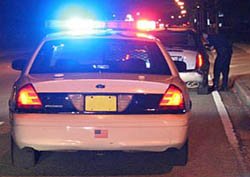
PHASE II – PERSONAL CONTACT
[EDITOR’S NOTE: Personal contact is the second part of a series on DUI Training for police. Other articles cover Walk and Turn, One Leg Stand, Vehicle in Motion, Horizontal Gaze Nystagmus and specific safety concerns when conducting DUI investigations.]
Here is where we begin to see police officers dropping the ball. Unfortunately, this part of the investigation may be the most critical in the entire process. We get so used to “routine” traffic stops, that we fail to observe some of the best evidence of impairment that we’re going to get – during the initial contact with the driver.
Remember, that at this point the drunk (or other criminal) is in panic mode, and is at the greatest potential for producing evidence due to nerves. They still feel somewhat comfortable in their car however, and can give you all you need for conviction. Once you ask them out, you are less likely to get the spontaneous observations than while they’re in the car.
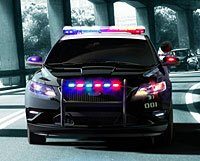
This phase begins the moment the vehicles come to a stop, not when you’re already at the suspect vehicle talking to the driver. As you approach the suspect vehicle what do you see, smell, hear. You’d be surprised how often someone will ditch their beer can in the back seat, or you’ll hear them blurt out “I’m drunk.”
Many officers are like “oh yeah, I’ve got this one now”, and let their guard down a little, which means their observations and notes for the report drop off too. These are big pieces to a bigger puzzle that has to be played out. Some of the most detailed observations should be outlined in your report from this phase of the DUI investigation.
As I’ve mentioned throughout this series, an officer who suspects they have stopped an impaired driver must go into the encounter with the belief the driver will not answer questions, will not perform any sobriety tests, and will not provide a breath or blood sample voluntarily. If you go into the contact with that mentality, you will be much sharper in your observation skills at this critical phase – believing this part may be some of the only evidence (outside of driving impairment) you will be able to base your decision upon.
Here’s an unorthodox sobriety test from England, but … I’d say its valid!
Detailed observations of the driver pay huge evidentiary dividends:
- Strong odor of intoxicants – CLUE!
- A driver who’s chewing a whole pack of gum to cover the alcohol odor – CLUE!
- The driver with vomit on his shirt – CLUE!
- The slurring of words, bloodshot/glassy eyes – CLUE!
- The admission of “I’m wasted” … CLUE!
- The open case of PBR (hey its got a blue ribbon) in the back seat – CLUE!
- The 5 minutes of trying to get the driver’s license out of wallet – CLUE!
- The enormous piss stain on the front of the pants … yeah, CLUE!
- The instant chain smoker … oh yeah, CLUE!
This is a good time to discuss the definition of some of the commonly quoted observations of the driver in DUI reports. The first three might be up for some debate, as you may use a slightly different definition. As long as you’re consistent, you should be fine. Getting the final two wrong goes against medical terminology, and could sink your credibility in court.
Bloodshot eyes – This is the noticeable reddening of the white portion of the eyeball. Alcohol dilates (makes big) the blood veins in the eye (alcohol does NOT dilate the pupils), which causes them to become noticeable to the naked eye – they’re always there but usually not noticeable.
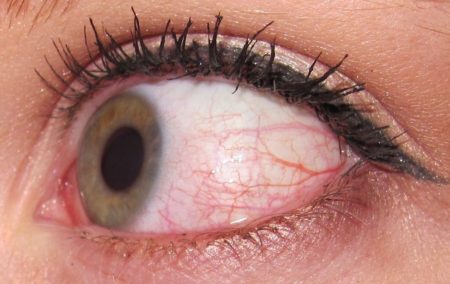
Glassy eyes – To me this is like the very old style glass that wasn’t very clear to look through. Like modern day windows used in bathrooms – allows light in, but you can’t really see anything. It almost looks like the driver has as a film of plastic over their eyes. This condition is caused by the alcohol in their system mixing with the natural eye fluids and causing them to dry or gum up.
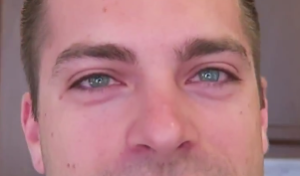
Think about a person with contact lenses that dry up and move off the iris (colored portion). You can see the contact lens, and it does not look clear at all. Now imagine that same image across the whole visible eye. Also think about the person who seems to stare to see what they’re seeing, and never seems to really be focused where they’re looking.
Watery eyes – I try to stay simple – watery is watery. If I see fluid collecting in the eyes, or some tear drops inadvertently roll out than I call it watery. Natural tears don’t count for this observation (everybody cries, whereas watery eyes could be caused by the body’s attempt to replenish the eyes with the natural lubrication).
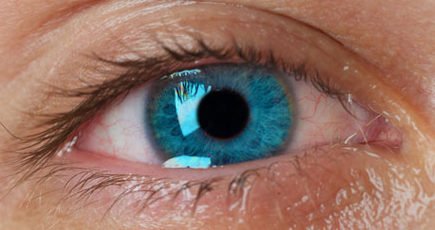
Dilated – This is talking about the pupil, or the dark circle in the middle of the eye. Dilated means to make bigger. Alcohol DOES NOT cause pupil dilation! This doesn’t mean you won’t see dilated pupils on your DUI stop, but if you do, then there is something else on board besides alcohol causing the pupils to dilate.

Here is a guide to know if the pupil is outside of it’s normal range of sizes – if it is larger than a pencil eraser, or smaller than a standard end of a ball point pen, than the pupil is outside of “normal” size ranges. What I mean by end of a ball point pen is if the pen is retracted, look at that end (including edges) and that is the minimum an pupil should be. Some examples of drugs that cause dilation of the pupils are – Cannabis (marijuana), CNS Stimulants, and Hallucinogens. More on all of this in a follow-up article on drugged drivers.
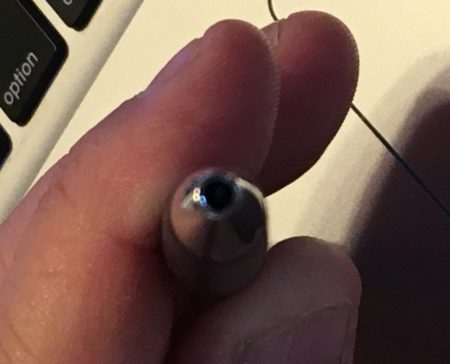
Constricted – This is where the pupil is much smaller than normal. There is only one category of drugs that causes pupil constriction – NARCOTIC ANALGESICS. These are the pain killers – heroin, morphine, opium, and all the synthetic derivatives such as, Oxycontin (Oxycodone by itself), Percocet (Oxycodone and Acetamenophin), Hydrocodone, etc.
You will definitely know if you are seeing constricted pupils as they are usually so small you have to look for the pupil. Again, more to follow in an additional article on drugged driving.
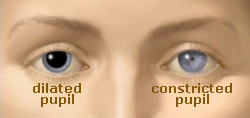
To understand the pupil size a little better think of the fight or flight syndrome. When you take drugs that stimulate that response in the body, the body naturally dilates the pupil to allow more light to come in (more information) so the brain can decide what to do. When narcotics are taken, the body is in “chill” mode, and could care less about the armed intruder, or that attacking lion. Pupils are therefore very small. These are just a few of the many things you could observe and help your case when the driver refuses any tests afterwards. With those types of observations you can succeed in your case without the SFST.
Another thing to consider in your reporting: pure alcohol, ETOH, does NOT have an odor. Saying that you could smell the odor of “alcohol” on their breath may spark a challenge from the defense. I either use “alcoholic beverages”, “intoxicants”, or “intoxicating beverages”.
If you do report or say this, the explanation to this defense attack is still rather simple. Pure alcohol is developed in laboratory settings. The alcohol in liquor and beer is derived from processes involving chemical reactions with natural substances that DO have an odor.
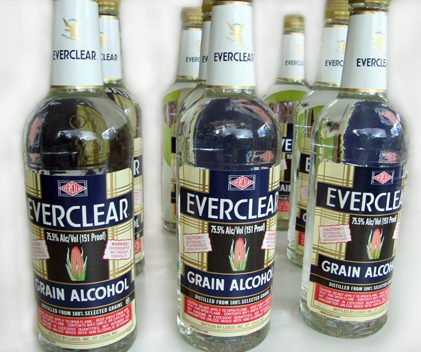
Use this example – grain alcohol is the highest proof alcohol substance that is offered commercially for consumption that I’m aware of. Ever smelled that stuff? It does have an odor – something akin to turpentine! Brings back horrible memories of foolish college days where grain alcohol was mixed with some stupid purple drink and consumed in un-godly amounts. And just the thought of that substance, and yes, the smell of grain alcohol, makes my stomach churn. This should be enough to silence the defense.
It is during this time that an officers can administer the PRE-EXIT tests. The recommended pre-exit tests are as follows:
The Alphabet Test – requiring the driver to recite the alphabet from pre-determined starting and stopping points. Don’t have them do the whole thing or you’ll get the kid’s song, which actually makes it easier for them. I usually went from F to R. These letters are not natural stopping points in the song, so it makes it tougher. And have them go forward not backwards – unless you want to look like an idiot in court when you can’t do a demonstration as a sober, officer. Whatever letters you choose, use those every time you administer the test – you just made your test “standardized”.
The Finger Count – requires the driver to use their thumb to touch the other fingers while counting them. The process has the driver touch the pointer or pinky finger (I’ve seen both ways – I find the pinky method better) and begin counting the fingers 1,2,3,4. After reaching the last finger, and a count of 4, they must count down from that same finger. Touching that last finger they must count the fingers 4,3,2,1. This process is repeated 3 times. They might get it the first or second round, but by the third time you should be getting some good clues. And once they mess up it’s usually a train wreck.
Here’s a link to a YouTube video showing the proper Finger Count test.
The Countdown Test – requires the driver to count backwards from pre-set numbers. The key here is to start on odd or even and end on the opposite. For example, start on 68 and count backwards to 53. The recommended distance is 15 numbers. And yes, the NHTSA manual has a numbers example, but if every cop in every state uses the same numbers, the drunks just have to practice those numbers. I think you’ll survive any challenge by “standardizing” your test by using your own set of numbers every time.
Pre-Exit Eye Examination – allows the officer to acquire evidence of Horizontal Gaze Nystagmus (HGN) while the driver is still in the vehicle. Have the driver turn their body towards the window so that their head remains in-line with their body. Then perform the test and gather evidence. HGN is one of the strongest evidences of impairment, because there are no strong defenses to something going on in the suspect’s own body.
In my state, the Appellate Courts have ruled that, “four clues on the HGN test is indicative of impairment”. What that is saying is that if ALL you get is the necessary four clues on HGN you have practically sealed your DUI case! So I always attempt a pre- exit HGN test as the driver sits in the car. Even most of the one’s that are preparing to refuse outside of the car, seem to be at ease in their car and will submit, thinking that I’m not confident enough to have them exit and they’re about to get let go – Gotcha!
The original NHTSA instructions on HGN stated the subject should be “standing” during this critical test. Defense attorneys picked up on this very quickly, so tests done while the driver was sitting in the car, laid out on a backboard, or even in a wheelchair were often not allowed in court. Ridiculous.
However, in the last few years Dr. Karl Citek, a practicing Opthalmologist and College Professor of Optometry has co-sponsored a NHTSA funded test on the validity of HGN in different positions. For an impressive biography on Dr. Citek check out this link.
Dr. Citek’s report has found that as long as the head is in-line with the body than HGN observed during the test is validated. In-line means the head is not tilted side-to- side (like a dog hearing a high-pitched noise), or turned to the right or left. This is HUGE for DWI enforcement.
What this means is that the impaired driver strapped to the backboard can absolutely have validated HGN tests performed on them. Seated and/or in a wheelchair? No problem. And, in the case of a car stop, as long as the officer has the driver partially turn their body towards the window, the officer has kept the head in-line with the body and can perform an initial HGN test right there in the car.
Finally how do they exit the car? Do they need to support themselves? Forget to unbuckle the seatbelt? Fall down? Pass gas? Yes, that’s a CLUE! I mean come on, whose going to fart in front of a cop unless you’re wasted!? Especially the ladies. Do they use the car for balance as they walk to the rear? Piss themselves? Again? You get the idea.
Final Thoughts
So a recap of your observation points during PERSONAL CONTACT:
- Exiting the patrol car and approaching the suspect vehicle.
- Actually attempting a form of communication with the driver – pre-exit tests.
- How do they exit the vehicle.
And the critical points to remember are DETAILS, DETAILS, DETAILS! If you go into the stop with the mindset that this 4-time loser is going to refuse everything you ask, maybe not even talk to you, then you’ll still feel very comfortable with the decision to arrest and make a good case.
The importance of DUI investigations cannot be underscored, as tens of thousands of Americans are killed or seriously injured by these reckless drivers each year. As professional police officers we have sworn an oath to serve and protect our communities. Failing to remove impaired drivers from the roadway, because of our lack of preparation to investigate these cases, is a failure of that oath.
Take your time, turn on your senses, and pay particular attention to the details. Then document those details in painstakingly clear expressions in your report. Tell the story of what you saw, paint the picture that anyone can imagine, and you should be able to make your case even if the driver refuses everything.
schrodie says
“There is only one category of drugs that causes pupil constriction – NARCOTIC ANALGESICS.”
Wrong. Pilocarpine can also cause pupil constriction. Pilocarpine is used to control or treat certain types of glaucoma. It is used to treat dry mouth (xerostomia), particularly in Sjögren’s syndrome, but also as a side effect of radiation therapy for head and neck cancer. In ophthalmology, pilocarpine is also used to reduce the possibility of glare at night from lights when the patient has undergone implantation of phakic intraocular lenses; the use of pilocarpine would reduce the size of the pupils, relieving these symptoms. Many citizens have these types of lenses, and may well be using pilocarpine drops to treat glare. If so, wouldn’t this be a means to make them a safer driver than they would be if not for those drops?
Pilocarpine has other medical uses which I will not elaborate on here, as it is unimportant. But for you to presume that ONLY opiates cause pupillary constriction is incorrect. But I’m sure that as a police officer, you will disregard these facts and automatically presume that anyone who has small pupils is automatically driving while drugged and must be arrested and charged.
If you are so great at narcotics investigations, you should have known this, sir.
Since this information is so blatantly incorrect*, I must presume that the rest of the information on this site is also incorrect (*in copspeak: “bullshit”).
But hey, thanks for the tips. Makes it so much easier for the drunks and stoners to wipe the courtroom floor with your testimony
Aaron says
Cat Hater,
Your description of Pilocarpine is correct. However, if you had read the article, and your own quote from it, you would have realized that I stated that the only “category” of drugs to cause pupil constriction is Narcotic Analgesics. The article does not talk about specific drugs, and the “categories” of drugs mentioned are those identified by the medical sciences to impair the physical and mental abilities of those influenced by them.
The intent of the program is to locate, and correctly identify persons under the influence of drugs that can “IMPAIR” the driver. Pilocarpine, though it does constrict pupils, does not fit into that “category”, as it does NOT IMPAIR a person’s mental and physical abilities (per se).
The DRE program, like any arrest for DWI, depends on the “TOTALITY OF CIRCUMSTANCES”. Simply having constricted pupils does not impair the driver alone. Impairment consists of a series of observations of the driver, including their driving, communication, and physical impairments from the drugs or alcohol in their system.
As for the comment that Pilocarpine would help the people drive better, that depends. If all they have in their system (eyes) is Pilocarpine, the reduced glare “could” help them drive more safely. However, in general, when darkness comes our eyes naturally dilate (get bigger). This is done so the eye can draw in more light (more information) that allows the brain to make better decisions. So even though Pilocarpine can reduce glare, the constricted pupils could actually diminish the driver’s ability to take in critical information they need to safely drive.
Your final comments clearly indicate you are a cop-hater. However, your arguments here fail to measure up to science, and the training that the DRE program provides to officers. In stark contrast to your belief that officers will be schooled in court, the DRE program has been accepted in courts under the Frye Standard in all 50 States. Convictions for drugged driving have been, and are being made every week by certified DRE’s.
The DRE program is a force multiplier in DWI/DUI enforcement. Nice try!
james thomas says
Also, no one in the history of it’s use has passed the sobriety test, it has been said.
Aaron E says
James people are not being asked to perform sobriety tests for the heck of it. Second, when they are asked to perform it is their performance that determines if impairment is there or not. In today’s world the vast majority of police cruisers are equipped with cameras that will document obvious impairment, or lack thereof.
Of particular importance is HGN, because this is an involuntary response of the eyes to high alcohol (or other drugs) consumption. A “professional” drunk may be able to perform some tests well, just because their body has become accustomed to their intoxicated state. However, the eyes are the “windows to the soul” and tell a much more powerful story.
Aaron says
I have congenital nystagmus. Congenital nystagmus is nearly always horizontal. I can’t tell you how many times I’ve sat in squad cars over this. Please do more to educate officers so that if I ever return to America, I’ll be treated like a human with dignity like I am as I travel the world.
If you don’t know what could give you a false positive… all your testimonies are a lie.
Aaron says
Aaron we appreciate your post, and pointing out a medical condition causing nystagmus. The different types of nystagmus (several) should be covered in any reputable DUI instruction course. In addition, officers should be trained when they are conducting DUI investigations, to emphasize any decision on the “totality of the circumstances.” Having one possible indicator of impairment should never be the basis for arrest.
The first part of the process is the vehicle in motion – was there driving behaviors indicative of impaired driving (speeding, lane violations, failure to stop at red lights, etc.).
The second part of the investigation is the focus of this article, the personal contact with the driver. The officer should see, smell, or observe indications of impairment prior to having a driver exit for sobriety tests. This could include slurred speech, bloodshot/watery/glassy eyes, poor dexterity when retrieving documents, and importantly any odors associated with alcohol or drug ingestion.
If there are signs of impairment at both of these stages, then an officer would have a reasonably fair justification to remove the driver for further sobriety tests. The results of the tests can then confirm or deny the officer’s initial suspicions. A part of the eye exam is to determine if the driver has any medical conditions – known or unknown.
One of the problems is the high correlation of impairment when horizontal gaze nystagmus (HGN) is present in combination with alcohol/drug ingestion. However, this should never remove the officer’s duty to investigate fully and base any decision for arrest on the totality of their observations – not just one.